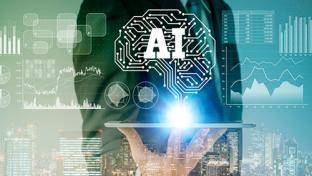Can an electronic sensor bring you closer to your customer?

Yes, but only if you listen — to both of them
In the early days of retail, the store proprietor knew customers by sight. As mostly mom-and-pop businesses, they naturally spent time getting to know their customers, who probably were also neighbors and friends. They knew from experience and immediate feedback what merchandise would or wouldn’t sell. It was the ultimate in customer intimacy.
As retail evolved to nation- and worldwide chains and the present-day “big box” format, customer intimacy eroded for many reasons – not the least of which was the sheer scale of modern retailing. The advent of online shopping ushered in an age filled with enormous potential for retailer-consumer connection, but in-store retail personnel were left wanting. That is, until now.
The hype surrounding the Internet of Things (IoT) and the hardware and software involved can leave a retailer confused and wondering what’s in it for them. Simply put, the IoT represents a goldmine of opportunity that can’t be ignored. But it’s important to note that a connected device positioned inside a bricks and mortar store is only an end point — what’s done with the data is the key to connected retail success.
Transform data noise to customer joys
The age of the connected retailer is still in its infancy. We’re all sorting out the advantages and the pitfalls that come with connected consumers and sensors. But there are a number of ways the sensor-enabled world can enhance customer engagement right now.
A system of affordable connected devices can sense when a customer and his smart phone walks in the door. Those devices married to powerful analytics can help a savvy retailer connect in real time with customers in ways that matters. Dig a little deeper, though. When sensor data combines with data gathered from sales and loyalty programs, applying powerful analytics to the data to reveal patterns opens the door to unprecedented opportunities to make offers that matter while the customer is still in the store.
Just picked up package of fresh fettuccine and a bottle of artisanal olive oil on Aisle 3? How about an invitation to an in-store Tuscan cooking class next month? The new suit you tried on in dressing room 3 looks good. Here’s an offer for 20 percent off shoes that perfectly complement it, and a free personal shopper consultation.
Storefront, back office both benefit from connectedness
What happens with customers roaming around on the connected store floor is one way retailers can derive benefit from a sensor-enabled world. But that’s only the tip of the iceberg with the data streaming from connected devices. The retail “back office” also benefits from connectedness and can enhance customer relationships far more than you might think.
Consider the familiar Radio Frequency Identification (RFID) tag. Many experts consider it one of the most important IoT technologies to watch. As it concerns tracking inventory, RFID tags and sensors are proven and affordable technologies. A retailer can increase inventory accounting accuracy, dramatically reduce out of stocks, and reduce product loss to fatten up margins. With a better understanding of where inventory is located at any given moment, a retailer can make cost-based decisions in a snap to best fulfill a customer’s needs regardless of the channel in which they’re shopping.
While today’s endpoint technology of beacons and RFID tags will evolve and be replaced with newer, better, faster, more robust technologies, analytical processing will always need to be in place to manage and interpret the data those technologies create. Experiment and build IoT solutions today, and make sure you plan and implement with an eye to the future.


